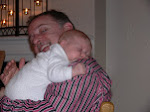It’s Wednesday, meaning it’s three days The Girlfriend has been achy, tender, listless. She takes two naps — before this pandemic, I think the only time in 32 months I saw her nap was on vacation in Andalucia, when we took daily siestas after boozy lunches.
The Kid stays sick, too, with headaches, wooziness, and her weird heart-racing symptom every time she expends energy, even to take a shower. At The Co-Parent’s house, The Kid’s 14-year-old stepsister now has the same symptoms. But the two adults are fine. I’m not 100 percent — I feel tingly, tight, drained. I also nap. But once I rest my energy returns, and my symptoms may be entirely psychosomatic. Among our sick, no one is coughing, no one has a high fever.
“It’s like we’re walking around on the edge of a rug, blindfolded, with shoes on,” The Co-Parent says. “Does this feeling mean I’m near the edge? At the center? On hard wood? What am I even feeling? We’re trying to read signals without tools to translate them.”
None of the sick in my family can get tested for Covid-19. Even those with fevers who go this week to New York City hospitals may not get a test. The Times writes about Elmhurst Hospital, in Queens, where 13 people die within 24 hours. The ER is jammed; ventilators and beds are scant. A resident calls the scene “apocalyptic.” The story quotes a 35-year-old warehouse worker who, coughing and fevered, sat in the ER for six hours Sunday, stood in line for hours in the Monday rain, then stood for seven more hours Tuesday, all without getting a test.
Germany, which since the disease’s appearance began aggressively testing and tracking the infected, as of Tuesday had more people diagnosed with Covid-19 than France (31,150 to 20,149). But the death rate in Germany is 0.4 percent, while in France it’s 4.3 percent. (So far the U.S. death rate is 1.45 percent.) Germany’s care isn’t better; they’ve simply tested and identified far more asymptomatic carriers, whom they can isolate to stop the disease’s spread. Deaths lag infections, by perhaps as much as a month; Germany’s death percentage could rise. But every country that has contained the disease for now has followed a similar strategy. Our nation's failure to secure sufficient test kits in January and February will haunt us.
The Senate Wednesday night appears ready to provide U.S. residents and corporations $2 trillion in aid; the House will likely approve on Thursday. Number of Covid-19 infections in New York State as of Wednesday: 30,811, up 20 percent from Tuesday. Deaths: 285.
Cleaning out the cabinet beneath my sink I find gold: a thermometer, of the old-fashioned glass-tube type. I arrange to bring it, and some of the white-beans-under-crumbs dish I made yesterday, to the co-parent’s house, where replacing the sole thermometer’s dead battery proved unavailing. The Girlfriend’s children, meanwhile, need her mailbox key to retrieve mail. I think about riding my bicycle, consider the chill and my fatigue, and use The Girlfriend’s car.
Observation: driving in New York City makes perfect sense during a pandemic lockdown. Who knew the traffic signals on Washington Avenue were synchronized? I hit greens from Atlantic Avenue to Eastern Parkway; a typical 30-minute trip takes 15.
I drop the key; The Girlfriend’s child, perky as usual, touts from the apartment building doorway a mid-‘00s British detective show they've been binging, Rosemary & Thyme, about middle-aged women gardeners who solve mysteries. I say I’ll consider it.
At The Co-Parent’s house, The Kid perks up enough to walk from her bed to the top of the stairs; she looks tired but reasonably clear-eyed. The Co-Parent steps out from her office, her fiancé takes a break from stove scouring (nearly every surface in their house has been cleaned multiple times over the past three days, they attest), and the four of us have a perfectly physically distanced conversation from the corners of their foyer. I linger longer than perhaps I should; it’s nice to spend time with other human beings.
The Girlfriend perks up to teach her public university course, an interdisciplinary graduate seminar, which she co-leads while sitting in bed. Ten of the 12 students participate in the class’s first videoconference. The students’ collective mood: melancholy, laced with solace in community. Most are artists who have sacrificed to stay in grad school; their well-laid semester plans have been dynamited. Most face financial woes. Many are isolated. Several are performers whose final project plans have been rendered moot. (Performing music together via videoconference is impossible, says a singer.) Some struggle to concentrate. But for others, school work provides much-needed focus and structure. The seminar is about making art during an epidemic; in the syllabus that epidemic was AIDS, but the course is flexible enough to incorporate the new pandemic. Everyone’s glad to participate, looks forward to coming next week. The Girlfriend looks exhausted.
I make coq au vin. It’s quite a few steps, and I’m tired. Earlier in the day, with fresher energy, I’d started a St. Louis Gooey Butter Cake; its bottom layer of yeasted dough has risen, and I need to finish. So I cream butter and sugar and corn syrup (by hand; I have no stand mixer) while The Girlfriend watches a documentary. By the time it comes out of the oven — weird but good: a slightly sour yeasty layer topped by a super-sweet layer, the combination of which has a lemon-bar texture and somehow works — The Girlfriend’s asleep. I eat two pieces by myself, crawl into bed.


No comments:
Post a Comment